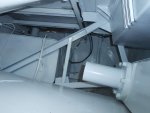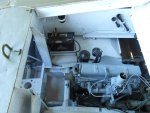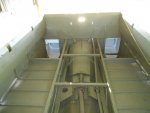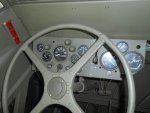When I look in the manual it says a new engine should only have 5 psi at hot idle and a worn engine should just move the needle off the peg, wow! Is this correct? I remember the Waukasau engines we used in forklifts only had 8 psi at idle. Did older engines run much lower pressures?
First, you have yet another guy jonesing for that DUKW. Beautiful.
Second, yes. Oil and plain bearings have always gone together, but pressure lubrication is really a pretty recent addition to mechanism. Pretty much no steam engines used it (later ones used elaborate drip lubricator systems, but no pressure AFAIK). Because early IC engines were basically steam engines without the water, the same technology carried over. Plain old hydrodynamic wedge lubrication was the order of the day, and splash lubrication of con rods appeared the instant that crank cases were enclosed. Mains generally had pumped or gravity-fed lubrication, but manufacturers resisted drilling holes in crankshafts for a very long time. I think the last Chevy/GMC engine design with splash lube rod bearings wasn't retired until some time in the late 1950s.
Early pumped lubrication systems weren't pressurized at all - the pump lifted oil out of the sump to some reservoir from which gravity fed oil to the bearings. Some time along the way people figured out that they could have smaller bearings (and thus a smaller engine of the same power) if they fed pressurized oil to the bearings, but this was 'exotic high tech' for several decades, and particularly truck and utility engines had just enough oil pressure to force oil through a filter for a long time indeed.
By the 1960s the design standard was 10 PSI oil pressure per 1000 RPM crank speed. Truck and utility engines might still max out at 20-30 PSI and have less than 5 PSI at idle on a hot, worn engine and be just fine. Only small-displacement high-RPM engines had much different lubrication systems until about the 1980s.









